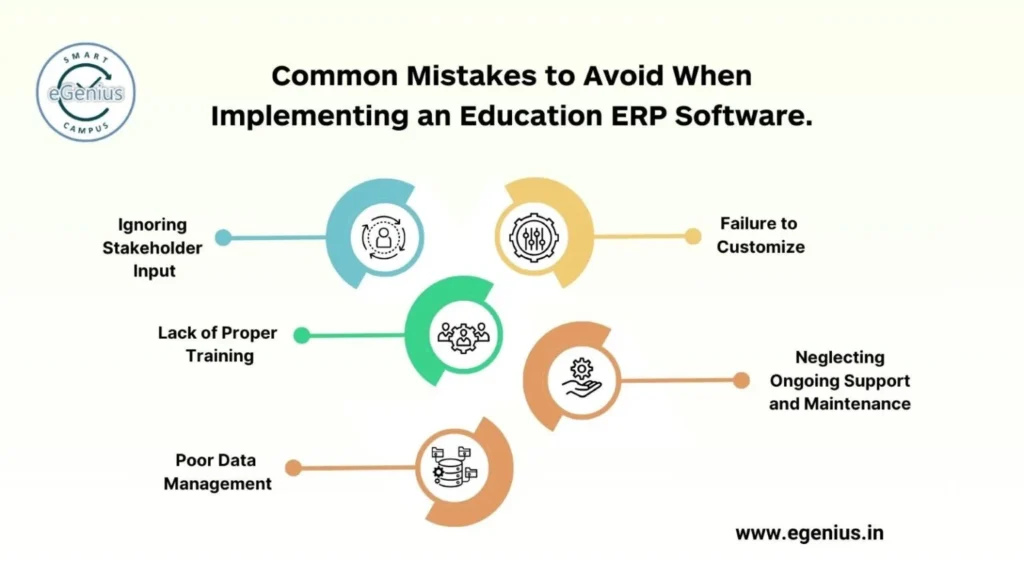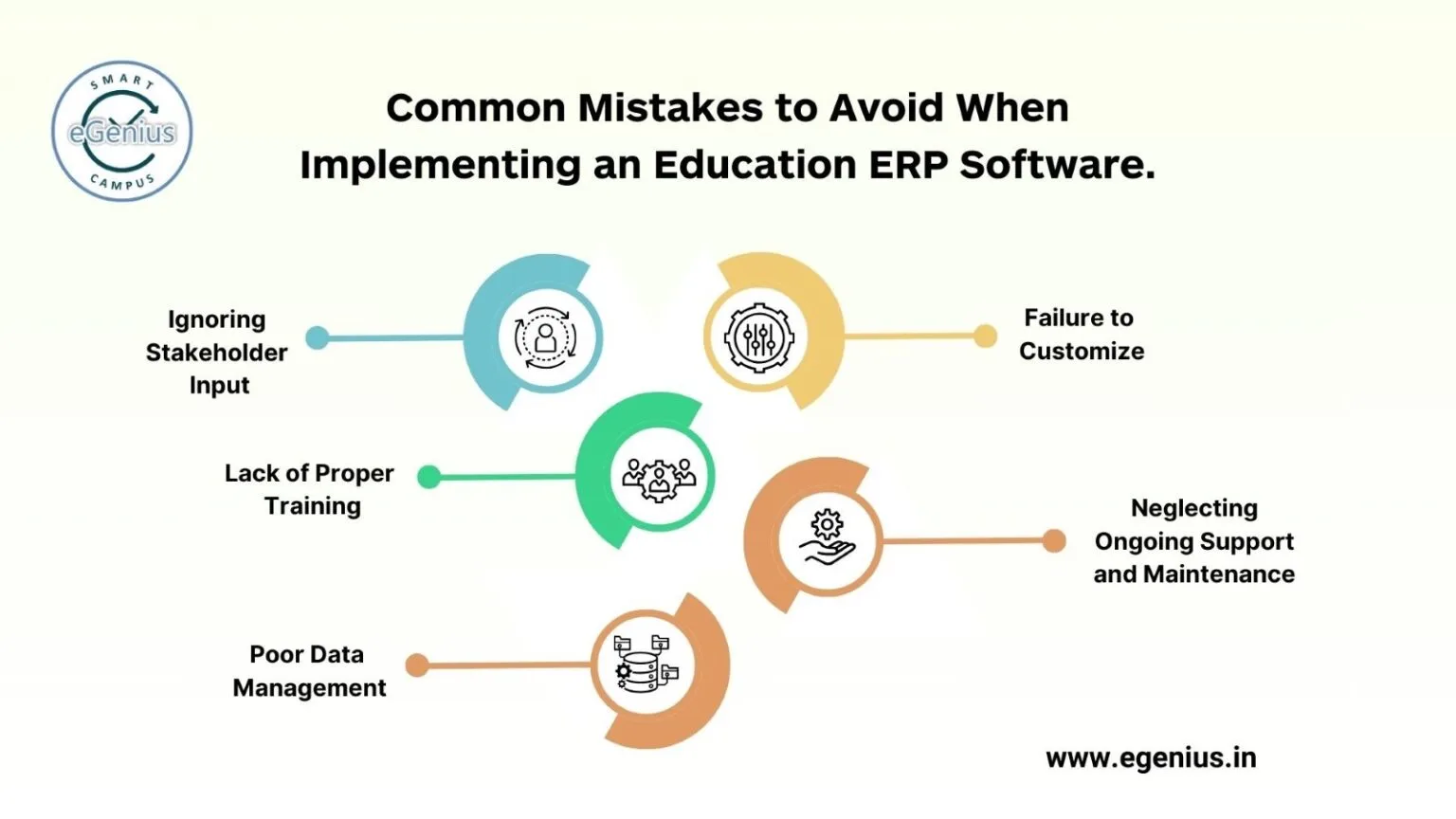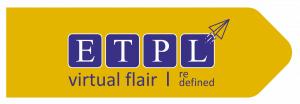Educational ERP (Enterprise Resource Planning) software is designed to integrate and manage the various administrative and academic processes of educational institutions. By streamlining operations such as admissions, attendance, finance, and communication, these systems help schools and universities operate more efficiently.
Table of Contents
- Here are some numbers about setting up ERP systems that show why it is important to learn from common mistakes
- Common Mistakes to Avoid When Implementing an education ERP software
- Ignoring Stakeholder Input
- Lack of Proper Training
- Failure to Customize
- Poor Data Management
- Neglecting Ongoing Support and Maintenance
Choosing the right educational ERP software is just the first step. Avoiding these mistakes will help you make the most of your investment and empower your institution to thrive in the digital age.
Selecting the appropriate ERP solution is essential as educational institutions depend more and more on technology to optimize operations. But a lot of colleges and universities commit basic errors that can compromise the success of their ERP implementation. We will go over the top five mistakes to avoid making while putting educational ERP software into use in this blog article to make sure the transition goes well.
Here are some numbers about setting up ERP systems that show why it is important to learn from common mistakes:
- Many employees resist using new ERP systems, causing problems in 45% to 60% of projects.
- ERP projects fail 30% to 60% of the time, so it is important to learn from common mistakes.
- Customizing ERP systems too much makes things complicated and costly in 30% to 40% of projects.
- Picking the wrong ERP vendor causes 55% to 75% of project failures.
- Making sure people adapt well to changes is key, as 65% to 75% of projects face challenges in this area.
Common Mistakes to Avoid When Implementing an education ERP software

- Ignoring Stakeholder Input: When institutes get new ERP systems, they sometimes forget to ask the right people what they need. That means the system might not work well for everyone. It’s like buying shoes that don’t fit—uncomfortable and frustrating. So, it’s smart to ask teachers, tech experts, and others what they think before choosing. That way, everyone’s happy, and the system works smoothly for everyone. Easy peasy!
- Lack of Proper Training: When staff members are not properly trained, implementing educational ERP software can lead to confusion and irritation. It is important to conduct training sessions so that all users know how to utilize the programme to do their tasks efficiently. By decreasing errors and raising productivity, an initial investment in thorough training can ultimately save time and money.
- Failure to Customize: Every educational establishment has unique policies and procedures. Using a one-size-fits-all strategy and neglecting to tailor the ERP software to the unique requirements of the organization is a frequent error. Give the software enough time to be configured to meet your specific workflows, processes, and data needs. By customizing the software, you can make sure it fulfils the requirements of your organization and optimizes its advantages.
- Poor Data Management: Every educational institution depends on data, and the success of an ERP installation depends on efficient data management. Data loss, duplication, and inaccuracies can result from improper data cleaning and migration. To make sure that your data is accurate, consistent, and secure, set up clear data management procedures and make an investment in data migration and cleansing solutions.
- Neglecting Ongoing Support and Maintenance: ERP software implementation for education is a continuous process that needs regular support and upkeep to remain functional. Insufficient funding for continuous support may lead to performance problems, security flaws, and system outages. Make sure you have a strategy in place for routine maintenance, updates, and technical assistance to handle any potential problems.
Make sure your institution’s adoption of educational ERP software runs smoothly and successfully by avoiding these typical blunders. You may harness the power of ERP technology to improve the efficacy and efficiency of your educational operations by integrating stakeholders, offering sufficient training, personalizing the programme, handling data well, and allocating resources for continuous support.
Step into the future of education with eGenius! Our educational ERP software is here to make your life easier. Say goodbye to mistakes and hello to innovation. Join us today and see the difference!














